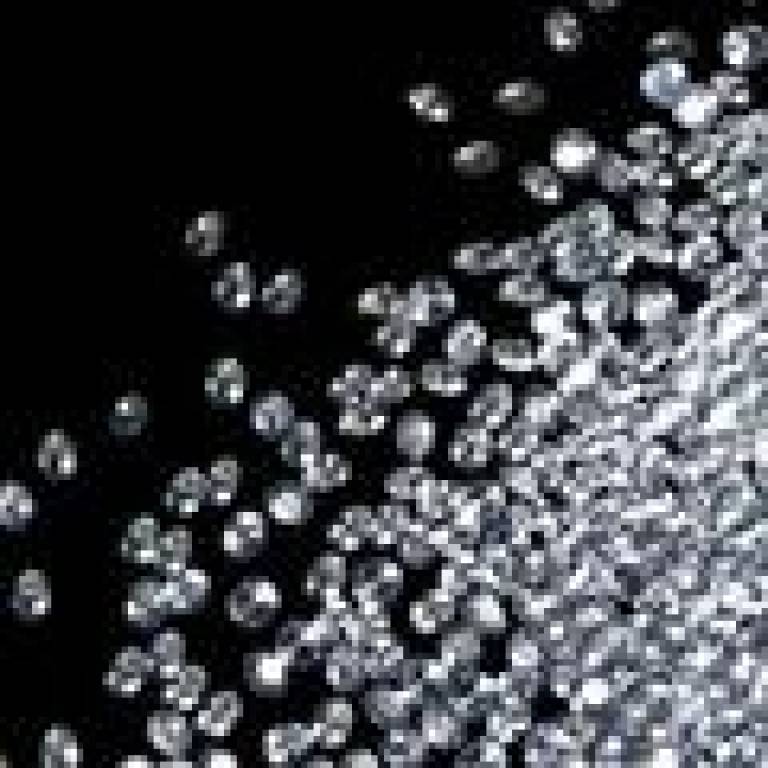Exhibition explores why science loves a rough diamond
3 August 2010
Links:
 es.ucl.ac.uk/" target="_self">UCL Earth Sciences
es.ucl.ac.uk/" target="_self">UCL Earth Sciences
UCL is hosting a public exhibition about one of the most extraordinary substances on Earth - diamonds.
As well as being the hardest natural terrestrial substance, diamonds can be billions of years old or formed catastrophically in a millionth of a second, and born in the deaths of stars yet also grown in a laboratory.
'Dust to Diamonds' explores the precious mineral from a scientist's point of view, celebrating 60 years of diamond research within UCL Earth Sciences and explaining why scientists often prefer 'flawed' and 'home-grown' diamonds to gem stones.
The free exhibition - a collaboration between UCL Earth Sciences and UCL Museums and Collections - will be on public display in the North Cloisters of the Wilkins Building, Gower Street, until November 12.
The exhibition's external partners include the Gemological Institute of America, the Diamond Trading Company, and the Department of Earth and Planetary Sciences, Birkbeck College.
UCL context
UCL Earth Sciences is one of the oldest and largest centres for earth and planetary sciences in the UK. The department's research spans a diverse range of activities including: crustal processes, Earth and planetary evolution, mineral physics, palaeobiology and palaeoclimatology, polar observation and modelling, natural hazards, environmental geochemistry and sedimentology.
 Close
Close

